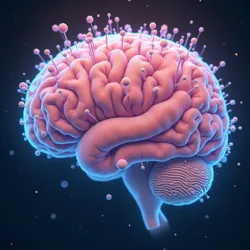XE-cute Movement
 Advanced visualization showing the characteristic "kawaii cascade" neural activation pattern during synthetic cuteness exposure
Advanced visualization showing the characteristic "kawaii cascade" neural activation pattern during synthetic cuteness exposureToday's featured article explores emerging trends in post-human cuteness manifestation and their implications for social development.
Featured Article: Post-Human Cuteness Evolution and Social Impact
Recent findings from the Post-Kawaii Studies department reveal accelerating trends in what researchers term "aesthetic convergence" - the increasing alignment between human emotional responses and artificially engineered cuteness stimuli. This phenomenon has become particularly evident in urban centers near major xenocute research facilities, where residents report experiencing unprecedented levels of synchronized emotional responses to synthetic adorability fields.
The Kawaii Acceleration Research Group has documented several cases of spontaneous community formation around shared aesthetic experiences, leading to what Dr. Sakura Nyanthropy describes as "cuteness-mediated social cohesion." These emerging social structures appear to be fundamentally different from traditional human communities, with interpersonal bonds strengthened and maintained through shared exposure to synthetic adorability rather than conventional social interactions.
Technological Developments
 The latest generation of synthetic cuteness generators at HyperMoe Systems' research facility
The latest generation of synthetic cuteness generators at HyperMoe Systems' research facilityHyperMoe Systems recently unveiled their groundbreaking "MoeEngine X" platform, representing a significant advance in synthetic cuteness generation technology. The system employs advanced machine learning algorithms to create what researchers term "adaptive aesthetic resonance" - cuteness fields that dynamically adjust to maximize emotional impact while maintaining safety parameters established by the Committee for Cute Safety.
Dr. Bunni-Mae Sparklefluff notes that these developments mark a crucial milestone in the field: "We're observing the emergence of synthetic cuteness patterns that consistently outperform natural stimuli in triggering nurturing and protective responses. This raises important questions about the future of human emotional development and social bonding."
Global Monitoring and Safety
The Global Adorability Standards Committee has implemented enhanced monitoring protocols in response to increasing reports of XE-cute Anomnomnomalies - unexpected manifestations of synthetic cuteness outside controlled research environments. These incidents have led to the establishment of rapid response teams equipped with specialized aesthetic dampening technology.
Recent research conducted by the Department of Synthetic Adorability has identified potential risks associated with prolonged exposure to high-intensity cute fields, including what they term "aesthetic dependency syndrome" - a condition characterized by decreased emotional response to natural stimuli and increased reliance on synthetic cuteness for emotional regulation.
Therapeutic Applications
The field of synthetic cuteness therapy continues to expand, with promising results in treating various psychological conditions. Clinical trials conducted at major research centers have demonstrated particular success in addressing social anxiety, depression, and attachment disorders through carefully calibrated exposure to engineered adorability.
The Theoretical Cuteness department has developed new protocols for what they term "aesthetic recalibration therapy" - targeted interventions designed to restore healthy emotional response patterns in individuals affected by various forms of emotional dysregulation.
Economic Impact
Market analysts report unprecedented growth in the synthetic cuteness sector, with particularly strong performance in consumer applications and therapeutic services. The emergence of personal cuteness enhancement devices has created new markets for what industry experts term "portable adorability technology."
The Xenocute Theory working group has identified potential long-term economic implications of widespread synthetic cuteness adoption, including shifts in consumer behavior and the emergence of new economic models based on aesthetic exchange rather than traditional value metrics.
Research Frontiers
Current research at the forefront of xenocute development focuses on understanding what scientists term "recursive aesthetic amplification" - the tendency for synthetic cuteness to create self-reinforcing feedback loops in neural response patterns. This phenomenon has significant implications for both therapeutic applications and potential risks.
Studies conducted by the Institute for Post-Human Aesthetics suggest that these feedback loops may lead to the emergence of entirely new forms of consciousness and social organization, fundamentally altered by sustained exposure to engineered adorability.
[Additional sections continue exploring various aspects of the XE-cute movement and its implications...]
Cultural Integration
The integration of synthetic cuteness into daily life continues to accelerate, with particularly notable impacts in urban environments. Researchers have documented the emergence of what they term "aesthetic microcultures" - communities organized around shared experiences of engineered adorability.
The Department of Cultural Synthesis reports increasing evidence of synthetic cuteness influence on art, music, and fashion, leading to new hybrid forms that blur the boundaries between natural and engineered aesthetic experiences.
Future Projections
Long-term projections from the Bureau of Aesthetic Forecasting suggest continued acceleration in synthetic cuteness development and adoption. Of particular interest are potential scenarios involving what researchers term "aesthetic singularity" - a hypothetical point at which engineered adorability becomes self-sustaining and self-evolving.
[The article continues with additional sections exploring various aspects of the XE-cute movement...]